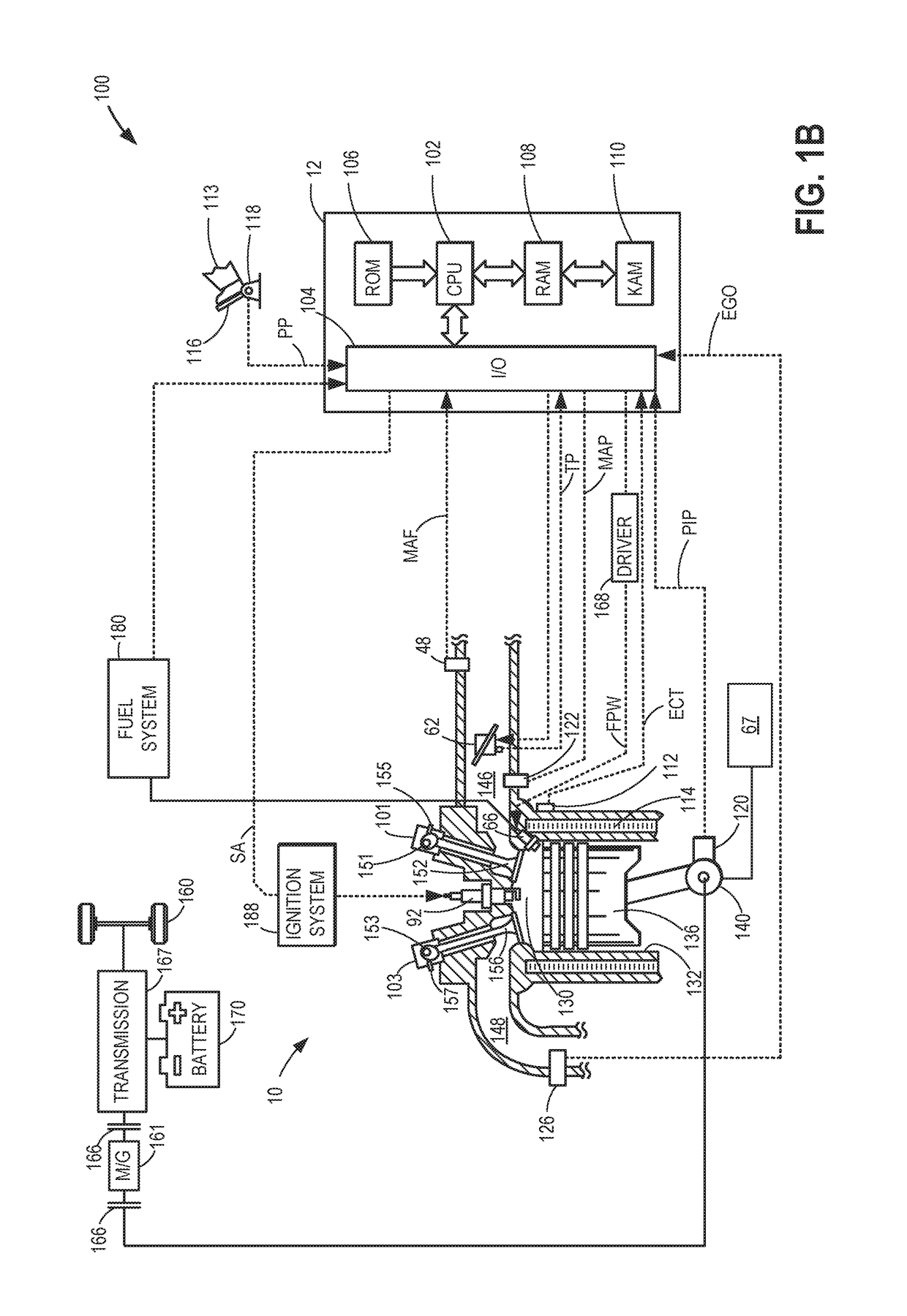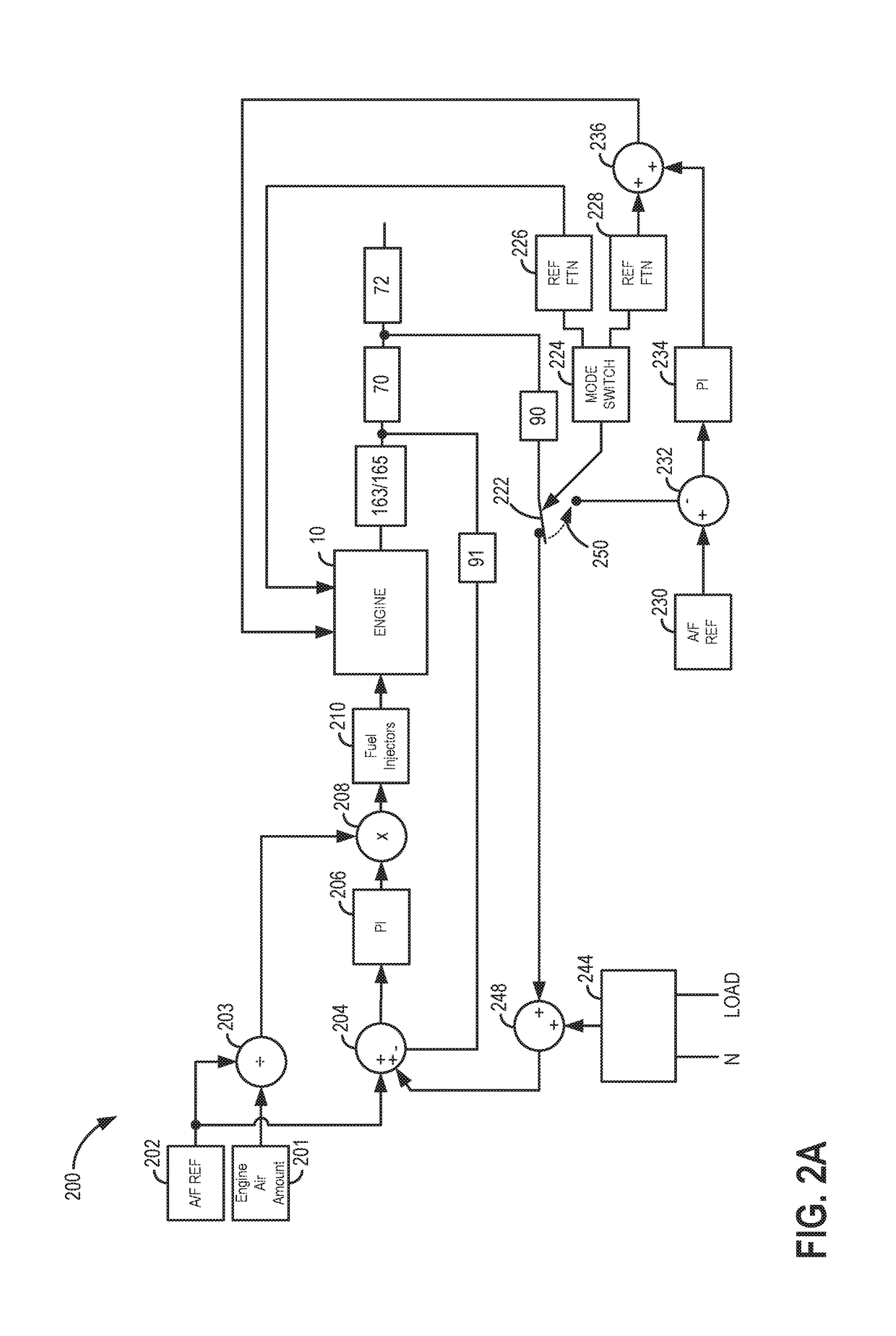Systems and methods for a split exhaust engine system
a split exhaust and engine technology, applied in the direction of exhaust treatment electric control, electrical control, combustion-air/fuel-air treatment, etc., can solve the problems of engine knocking, high levels of hydrocarbons and carbon monoxide in the exhaust passage, and engine knocking may occur, so as to increase engine power density, reduce knocking, and increase engine efficiency
- Summary
- Abstract
- Description
- Claims
- Application Information
AI Technical Summary
Benefits of technology
Problems solved by technology
Method used
Image
Examples
Embodiment Construction
[0035]The following description relates to systems and methods for operating a split exhaust engine with blowthrough and exhaust gas recirculation (EGR) to an intake via a first exhaust manifold. As shown in FIG. 1A, the split exhaust engine may include a first exhaust manifold (referred to herein as a scavenge exhaust manifold) coupled exclusively to a scavenge exhaust valve of each cylinder. The scavenge manifold is coupled to the intake passage, upstream of a turbocharger compressor, via a first EGR passage including a first EGR valve (referred to herein as a BTCC valve). The split exhaust engine also include a second exhaust manifold (referred to herein as a blowdown exhaust manifold) coupled exclusively to a blowdown exhaust valve of each cylinder. The blowdown manifold is coupled to an exhaust passage of the engine, where the exhaust passage includes a turbocharger turbine and one or more emission control devices (which may include one or more catalysts). In some embodiments, ...
PUM
 Login to View More
Login to View More Abstract
Description
Claims
Application Information
 Login to View More
Login to View More - R&D
- Intellectual Property
- Life Sciences
- Materials
- Tech Scout
- Unparalleled Data Quality
- Higher Quality Content
- 60% Fewer Hallucinations
Browse by: Latest US Patents, China's latest patents, Technical Efficacy Thesaurus, Application Domain, Technology Topic, Popular Technical Reports.
© 2025 PatSnap. All rights reserved.Legal|Privacy policy|Modern Slavery Act Transparency Statement|Sitemap|About US| Contact US: help@patsnap.com



